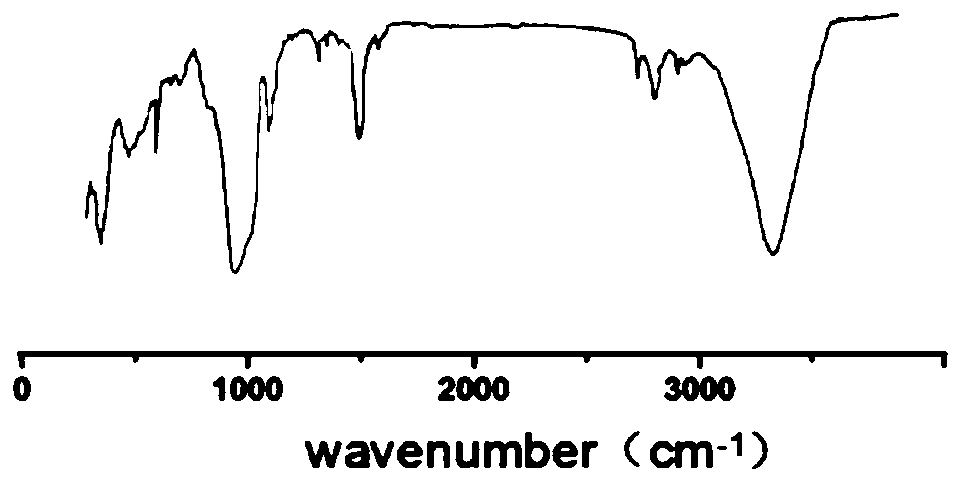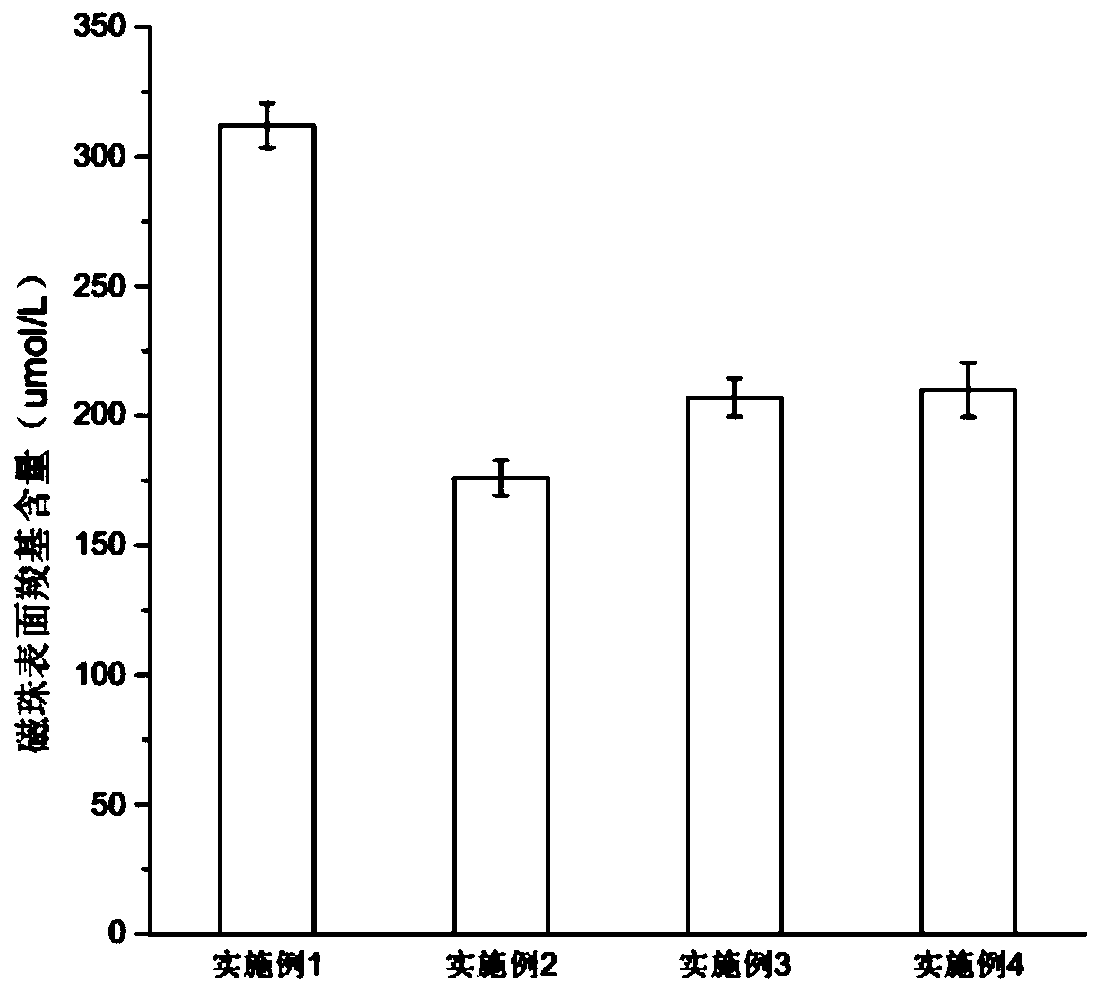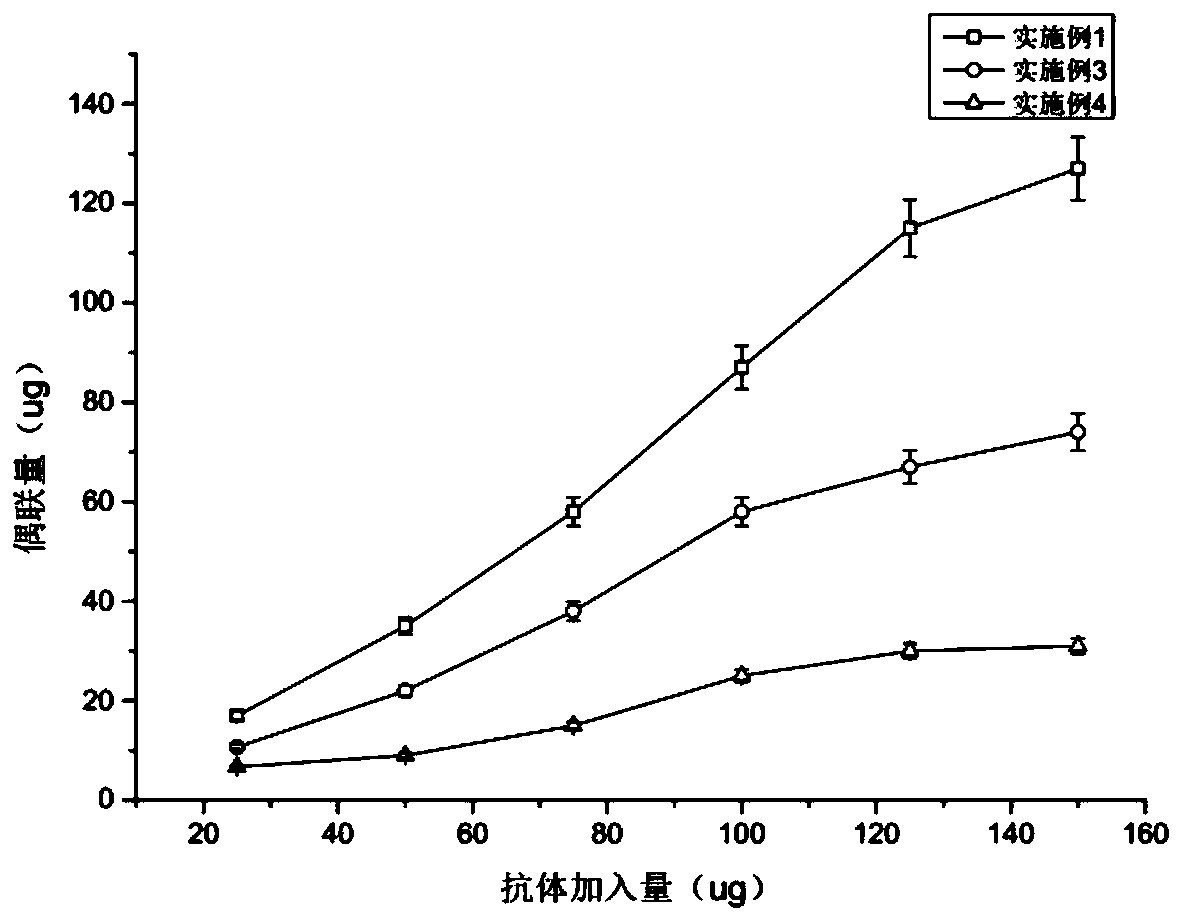Seafood product detection kit and preparation method thereof
A technology of hydroxyvaleric acid and guanidine thiocyanate, which is applied in the field of microbial detection, can solve problems such as false positives, missed detection, and complex components, and achieve the effects of increasing coupling rate, avoiding cross-linking and polymerization, and high sensitivity
- Summary
- Abstract
- Description
- Claims
- Application Information
AI Technical Summary
Problems solved by technology
Method used
Image
Examples
Embodiment 1
[0041] 1. Preparation of Vibrio parahaemolyticus rabbit clone antibody IgG: the concentration is 1×10 9 CFU mL -1 The inactivated bacteria solution was emulsified completely with the same amount of Freund's complete adjuvant / Freund's incomplete adjuvant to prepare the inactivated vaccine. The concentration for the first immunization was 1×10 9 CFU mL -1 The healthy New Zealand white rabbits were immunized with Freund's complete adjuvant vaccine, and each rabbit was immunized with 2 mL by multi-point subcutaneous injection on the back. Immunization, the third immunization. After 10 days, the immunization was boosted twice with inactivated bacterial solution. Before each immunization, blood was collected from the vein of the rabbit's ear, and the serum titer was determined. When the separation standard is reached, blood is collected from the heart of the rabbit, and the serum is separated to obtain antiserum against Vibrio parahaemolyticus. The polyclonal antibody IgG in t...
Embodiment 2
[0063] Surface carboxyl functional modification of magnetic nanocomposite particles: Weigh 0.086g SDS sodium dodecyl sulfate and 0.008g NaHCO 3 In the three-necked flask, add 28mL of water and the prepared Fe 3 o 4 @SiO 2 The magnetic nanocomposite particles are ultrasonically dispersed and placed in a water bath at 72°C, stirred at 300 rpm, and protected by nitrogen gas. When the temperature of the liquid in the three-neck flask reaches 72°C, add 2 mL of styrene, 200 μL of 2-hydroxyvaleric acid (1.3 g / mL), and 0.5 mL of potassium persulfate (0.03 g / mL) to react for 8 hours. The magnetic suction pouring method washes the precipitate 5 times with ethanol, then washes it 5 times with ultrapure water, and finally dissolves the precipitate in ultrapure water to obtain carboxyl functionalized magnetic beads. All the other parts are completely consistent with Example 1.
Embodiment 3
[0065] Surface carboxyl functional modification of magnetic nanocomposite particles: Weigh 0.086g SDS sodium dodecyl sulfate and 0.008g NaHCO 3 In the three-necked flask, add 28mL of water and the prepared Fe 3 o 4 @SiO 2 The magnetic nanocomposite particles are ultrasonically dispersed and placed in a water bath at 72°C, stirred at 300 rpm, and protected by nitrogen gas. When the temperature of the liquid in the three-necked bottle reaches 72°C, add 2 mL of styrene, 200 μL of acrylic acid, and 0.5 mL of potassium persulfate (0.03 g / mL) to react for 8 hours. After the reaction is completed, wash the precipitate with ethanol for 5 times by magnetic suction pouring method , and then washed five times with ultrapure water, and finally dissolved the precipitate in ultrapure water to obtain carboxyl functionalized magnetic beads.
[0066] Preparation of anti-Vibrio parahaemolyticus immune magnetic beads: After the 1mg / mL carboxyl-functionalized magnetic beads are fully ultrasoni...
PUM
 Login to View More
Login to View More Abstract
Description
Claims
Application Information
 Login to View More
Login to View More - R&D
- Intellectual Property
- Life Sciences
- Materials
- Tech Scout
- Unparalleled Data Quality
- Higher Quality Content
- 60% Fewer Hallucinations
Browse by: Latest US Patents, China's latest patents, Technical Efficacy Thesaurus, Application Domain, Technology Topic, Popular Technical Reports.
© 2025 PatSnap. All rights reserved.Legal|Privacy policy|Modern Slavery Act Transparency Statement|Sitemap|About US| Contact US: help@patsnap.com



